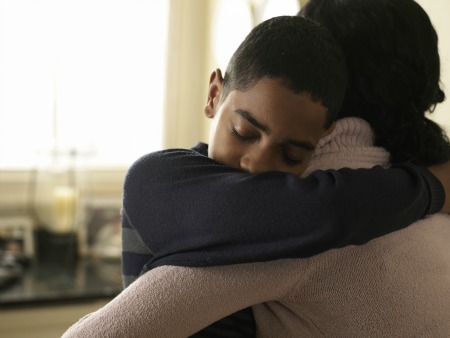Guide for Incarcerated Parents Who Have Children in the Child Welfare System
The U.S. Department of Health and Human Services, Office of the Assistant Secretary for Planning and Evaluation, and the Administration for Children and Families, in collaboration  with the U.S. Department of Justice, Federal Bureau of Prisons, have released Guide for Incarcerated Parents Who Have Children in the Child Welfare System (PDF, 34 pages). Developed for the roughly 1 in 10 mothers and 1 in 50 fathers in state prison who have a child in the child welfare system during their incarceration, the purpose of this guide is to help parents involved in the criminal justice system work with the child welfare system to stay in touch with their children and stay involved in decisions about their children’s well-being. The guide also includes important information on steps required by the child welfare system for reunification, or having children return home to their family after foster care. Child welfare and social work professionals may also benefit from this guide to inform work with incarcerated parents, their children, and the caregivers.
with the U.S. Department of Justice, Federal Bureau of Prisons, have released Guide for Incarcerated Parents Who Have Children in the Child Welfare System (PDF, 34 pages). Developed for the roughly 1 in 10 mothers and 1 in 50 fathers in state prison who have a child in the child welfare system during their incarceration, the purpose of this guide is to help parents involved in the criminal justice system work with the child welfare system to stay in touch with their children and stay involved in decisions about their children’s well-being. The guide also includes important information on steps required by the child welfare system for reunification, or having children return home to their family after foster care. Child welfare and social work professionals may also benefit from this guide to inform work with incarcerated parents, their children, and the caregivers.
The guide is grouped into seven sections that provide incarcerated parents with guidance on how to stay involved with their children and how to understand the reunification process:
- Child Welfare Stages — general information about how the child welfare system works
- What to do if Your Child is in the Child Welfare System — what incarcerated parents should do if they think their child is in the child welfare system
- What to Include in a Letter or Conversation with Your Child’s Social Worker — basic elements for incarcerated parents to include in communication with their child’s social worker
- Other Information that May Apply to You — other situations that may be relevant to incarcerated parents, such as owing child support, having a child with a disability, and more
- Information on Termination of Parental Rights — the process for terminating parental rights, including how the decision is made and what incarcerated parents can do after their parental rights have been terminated
- Who Can Help? — suggestions for organizations that can help incarcerated parents navigate the child welfare system
- State Child Welfare Agency Contact Information — contact information for state child welfare agencies so incarcerated parents can get in touch with the child welfare agency that is responsible for handling their child’s case
» Click here to download the guide (PDF, 34 pages)
